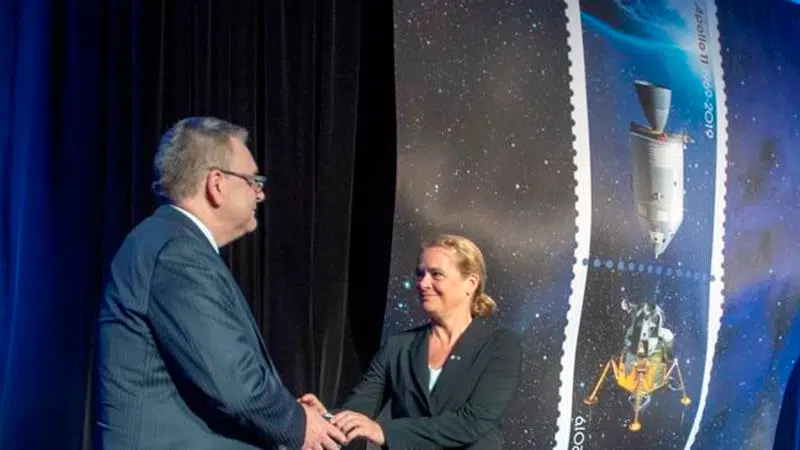
Stamps mark Canadian contribution to Apollo 11 moon mission as 50th anniversary nears
LONGUEUIL, Que. — With the 50th anniversary of the Apollo 11 mission that landed humans on the moon for the first time approaching, Canada Post released a pair of commemorative stamps Thursday highlighting the Canadian minds and technology that went a long way to making the moment happen.
NASA astronaut Neil Armstrong’s first steps on July 20, 1969 were watched by half a billion people worldwide and became a well-known milestone in human space exploration.
But Canadian engineers working for NASA played a big part in the mission, including Jim Chamberlin, who determined the type of spacecraft needed to get to the moon and was the first to realize first that flying directly to the moon wasn’t the best option. He would help develop the lunar orbit rendezvous — which involved descending to the surface aboard a landing module connected to the main spacecraft.
Chamberlin, born in 1915 in Kamloops, B.C., was the chief designer of the Avro Arrow project scrapped in 1959. He was one of dozens of engineers subsequently recruited south of the border to work with the NASA space program. He was head of engineering for Project Mercury — the first U.S. human space flight program — and designed the Gemini spacecraft that preceded Apollo.


